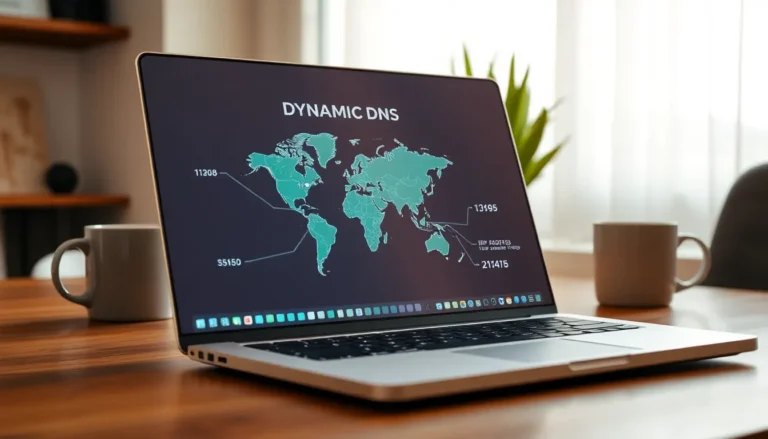Table of Contents
ToggleIn the fast-paced world of tech, nothing sends shivers down a developer’s spine quite like an unexpected shutdown of API access. Imagine waking up to find your beloved integrations have been tossed out like last week’s leftovers. It’s a nightmare that can turn even the calmest coder into a caffeine-fueled ball of stress.
Overview of Shuts Integrations
Shuts integrations play a critical role in ensuring smooth API connectivity for applications. Developers rely on these integrations to maintain seamless workflows and uninterrupted service delivery. When API access is unexpectedly shut down, it leads to significant challenges for businesses and technical teams.
Many integrations involve third-party services essential to application functionality. Common third-party services include payment gateways, customer relationship management tools, and messaging platforms. The sudden removal of access disrupts communication between these services and the core application, leading to operational delays and potential revenue loss.
Error messages and dependency breakdowns often accompany integration shut-offs, heightening stress levels among developers. They scramble to identify the root cause while seeking alternative solutions, thereby multiplying pressure within the team. Time spent troubleshooting can translate to considerable downtime, particularly if the integrations are crucial for business operations.
Risk assessments provide insight into potential impacts of API access disruptions. Organizations should consider developing contingency plans to address these challenges proactively. Identifying fallback options enhances resilience and minimizes service interruptions when integrations go offline unexpectedly.
Monitoring tools assist developers in tracking API performance and detecting issues before they escalate. Continuous observability allows teams to respond swiftly to anomalies, ensuring that integrations remain stable and reliable. Investing in robust monitoring systems can lead to early warnings, thus minimizing chaos during critical instances.
Future-proofing integrations starts with understanding dependency chains. Mapping out how various services interact can clarify the potential fallout from each integration, allowing better preparation for possible API access loss.
Impact of Access Restrictions

Access restrictions on API integrations result in significant challenges for both developers and end users. The implications of sudden shutdowns extend beyond mere inconvenience, affecting multiple aspects of functionality.
Effects on Developers
Developers encounter immediate frustration as they face error messages indicating failed integrations. Unraveling the causes behind these issues demands time, leading to a scramble for alternative solutions. Heightened stress levels can emerge from the pressure to resolve problems quickly, impacting overall productivity. Consequently, teams may experience increased downtime, which can amplify the loss in revenue. Engaging with monitoring tools becomes crucial for identifying performance issues swiftly. Thorough risk assessments play a vital role in preparing for such disruptions, allowing developers to formulate effective contingency strategies.
Effects on End Users
End users experience a direct impact when API access is restricted. Service interruptions can lead to confusion and dissatisfaction, as expected functionalities may become unavailable. Timely order processing or seamless communication may become disrupted, diminishing user trust. Users often rely on consistent performance from applications; any disruption can provoke frustration. Addressing user concerns promptly is essential to maintain positive relationships. Organizations that effectively communicate with users can help mitigate the negative effects caused by access restrictions, ensuring that user experience remains a priority despite challenges.
Exploring the Causes
Unexpected shutdowns of API access can stem from various causes. Understanding these factors is critical for developers to address issues effectively.
Technical Glitches
Technical glitches frequently disrupt API access. Server crashes often occur due to overloaded systems, leading to temporary unavailability. Additionally, misconfigured settings can create persistent connection problems. Developers may encounter issues with outdated libraries or code dependencies that aren’t compatible with current platforms. Testing integrations regularly reduces the likelihood of these glitches influencing productivity. Monitoring tools also play a vital role in catching errors before they escalate. By pinpointing issues quickly, developers can restore access promptly, minimizing downtime.
Policy Changes
Policy changes by third-party services can unexpectedly affect API access. Organizations sometimes update their terms of service, impacting integration permissions. For instance, a new access restriction introduced by a payment gateway can halt transactions, leading to significant revenue loss. Not all policy changes receive sufficient advance notice, which exacerbates the impact on users and developers alike. Keeping open lines of communication with service providers helps mitigate disruption effects. When developers stay informed about potential policy shifts, they can devise proactive strategies to maintain service continuity.
Possible Solutions
Organizations facing sudden API access shutdowns can take immediate and long-term actions to mitigate disruptions. Addressing these challenges requires proactive strategies and careful planning.
Immediate Workarounds
Quickly implementing temporary fixes can help maintain functionality. Using cached data allows applications to continue functioning until access is restored. Redirecting traffic to alternative services can also provide a short-term solution. Developers might create mock services to simulate API behavior, allowing testing without reliance on external access. Utilizing logging mechanisms helps track error messages, providing insights into issues that may arise during the outage. These workarounds aid in minimizing downtime and ensuring that essential functionalities remain available to users.
Long-Term Fixes
Establishing robust long-term strategies strengthens API stability. Conducting regular health checks allows teams to identify potential vulnerabilities before outages occur. Investing in redundancy measures, such as backup APIs or diverse service providers, creates multiple pathways for essential services. Developers should also implement comprehensive documentation of all API dependencies, making it easier to assess the impact of changes. Continuous engagement with service providers fosters an understanding of policy updates, enabling proactive planning for potential disruptions. These measures enhance an organization’s resilience against future API access issues.
The challenges posed by sudden API access shutdowns can be daunting for developers and organizations alike. By prioritizing proactive strategies such as risk assessments and effective monitoring, teams can navigate these disruptions more smoothly. Understanding the underlying causes and maintaining open communication with service providers is vital for minimizing the impact on operations and user experience.
Investing in redundancy and thorough documentation can further enhance resilience against future access issues. As the tech landscape continues to evolve, staying prepared and adaptable will empower organizations to maintain seamless service delivery and uphold user trust despite unforeseen challenges.







